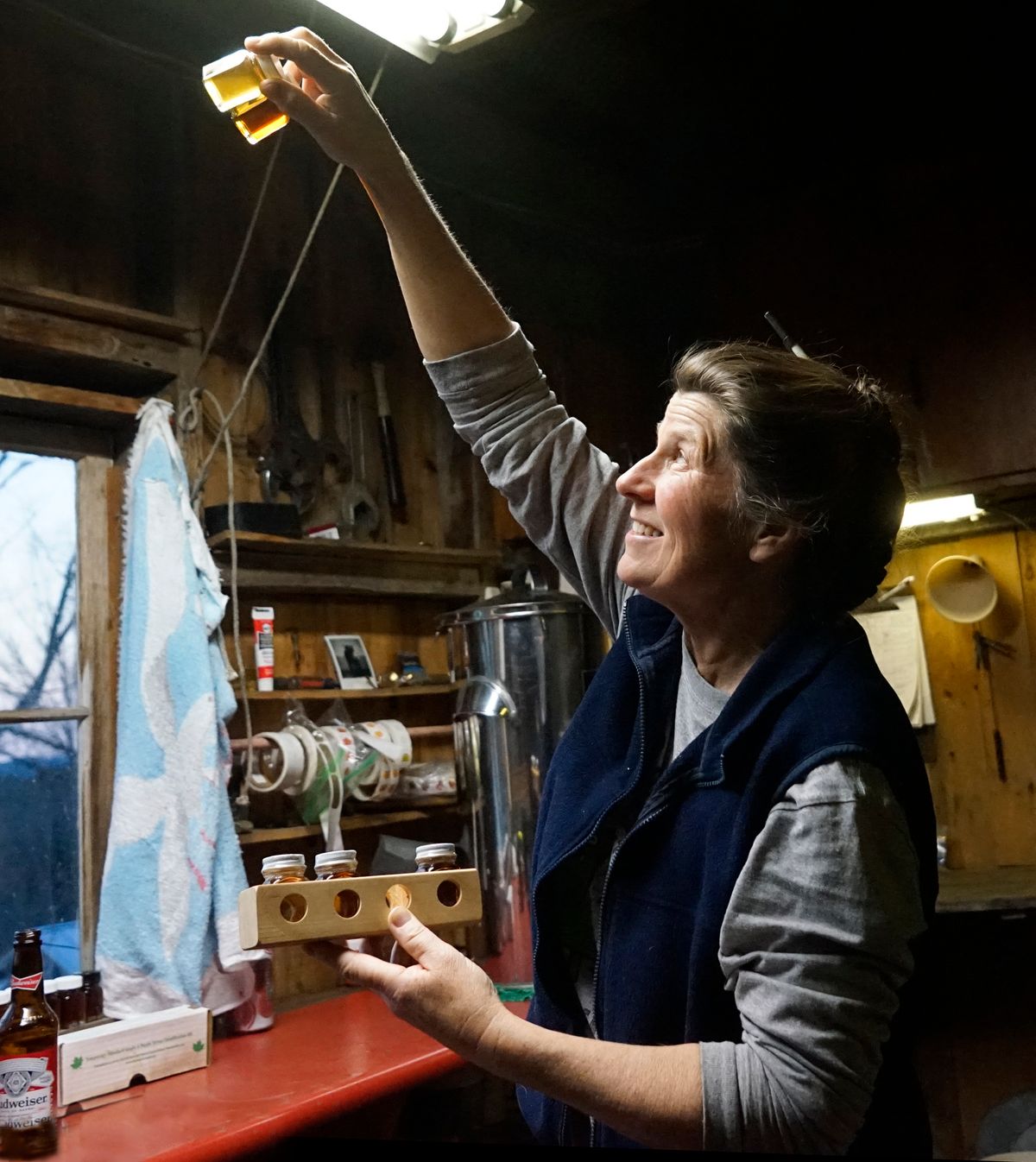2021 Sugaring Season: average or bust?
Both Jessica Eaton and Donn Downey agreed that maples are under stress.

Sugaring season has drawn to a close…. no more billows of fragrant steam or cheerful bustle around the sugar house. It’s an iconic activity. Indeed, since 1916 Vermont has been the national leader with the most taps, underscoring the importance of the maple industry to the state’s economy and culture. But since the 1970s and ’80s there have been rumblings about maple decline and its effect on sugaring. In the midst of this, how are local sugarmakers faring?
Jessica Eaton and family have been sugaring and tapping their magnificent old maples along North Turnpike for the past 60 years. Jessica reported a slightly below average year, with 45 gallons of syrup from 600 taps. That is compared to 50-75 gallons in average-to-good years. She attributed the lower yield to colder-than-average temperatures and more wind than normal. The best sap flows occur on warm, sunny days following a cold night. The old maples’ sap had a good sugar content of 2% this year, though it is more normal for it to be 2.5%. She noted that her roadside trees are blessed with large crowns to absorb plenty of sunlight in their open location. Other producers who tap forest maples with small crowns were reporting one-third of their normal yields and a sap sugar content of 1.5%.
Inside Jessica’s sugarhouse, samples of syrup from each consecutive day of boiling are displayed in a row of small glass jars. Syrup from the start of the season is a pale golden color. As the season progresses, the samples gradually darken through amber, ending with a rich dark brown. In the beginning, there are no impurities in the sap collection system. However, a small amount of fermentation creeps in as the season advances and air temperatures warm. This and other changes contribute to the more robust flavor of the later syrup. However, she noted that dark syrup is no thicker in consistency than light syrup, and they have the same sugar content. Sugaring ends when the sap itself runs yellow. This signals that the tree is making different sugars—ones which, in Jessica’s experience, do not solidify to make maple sugar cakes.
Donn Downey’s sugaring operation draws sap from forest maples with a total of 400 taps. He reported his season was far below average, with a yield of 30 gallons of syrup compared to the customary 80 gallons. A thick, persistent snow pack that kept roots chilled and a sudden swing in temperature from below normal to above normal left trees with little time to “wake up.” The sap “dribbled” but did not run. Sap begins to spoil after it is collected. It cannot be stored, so a lot of sap was thrown out because at least 100 gallons at a time were needed to justify firing up the evaporator. In a normal season he estimated there would be 200 to 400 gallons of sap a day.
Both Donn and Jessica agreed that maples are under stress. Jessica listed drought, more frequent and more damaging ice storms, insects, and a lack of reliable snow cover to protect the roots in winter. Donn agreed. He studied forestry at Antioch University, NY, and he’s noticed a decline in maple vigor. Respecting the trees, he reduced his number of taps this year and will probably do so again in the future.
